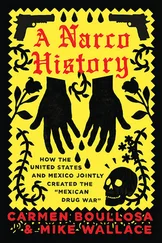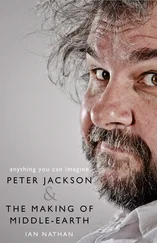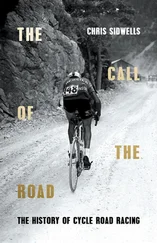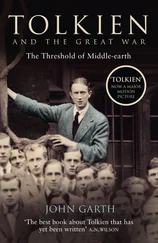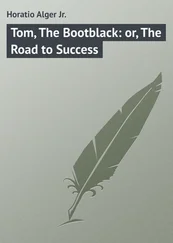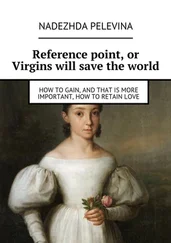Now, Tolkien integrated this second thought into his story marvellously well, even keeping the first version as an excuse Bilbo had told with uncharacteristic dishonesty to put his claim to the ‘precious’ beyond doubt. However, it is the first thought one should keep in mind while considering the genesis of The Hobbit. And here the obvious point, surely, is that the ring is just a prop: a stage-prop, like the marvellous devices common in fairy-tales or legends (there is a wish-fulfilling ring in the Grimms’ ‘The King of the Golden Mountain’, and a cloak of invisibility), but also a prop for Bilbo’s status with the dwarves. It is a kind of ‘Equalizer’. After acquiring it Bilbo remains in most ways as out of touch with Wilderland as before: he cannot dress meat or dodge wargs, and when in chapter 15 Balin asks if he can make out the bird’s speech he has to reply ‘Not very well’ – the narrator, still maximising the distance between him and everyday Middle-earth normality, adds ‘(as a matter of fact, he could make nothing of it at all)’. He cannot even tell when crows are being insulting. But the ring makes up for this. Before he had it he was essentially a package to be carried, his name as a ‘burglar’ nothing but an embarrassment even to himself. With the ring he can take an active part. He uses it straight away to get past the dwarves’ look-out and raise his prestige – they ‘looked at him with quite a new respect’ – and then to save his companions first from the spiders and second from the elvish dungeons. The problem after that is in a way to maintain his status without simply reducing it to the accident of owning a magic ring. Tolkien takes some trouble over this, observing in the wood-elves’ dungeon that ‘One invisible ring was a fine thing, but it was not much good among fourteen’ – so that credit for that escape is Bilbo’s – and after the fight with the spiders that ‘knowing the truth about the vanishing did not lessen [the dwarves’] opinion of Bilbo at all; for they saw that he had some wits, as well as luck and a magic ring – and all three were useful possessions.’ There is something provocative in this last statement, for it seems to deny that owning a magic ring could be an accident. Still, the very arguability of Bilbo’s status shows how the ring changed The Hobbit : it brought a new possibility of action which would be simultaneously ‘heroic’ and credible, it developed the opposition of ancient and modern motifs into something like a dialogue.
The main subject of that dialogue is courage. Few modern readers of Beowulf, or the Elder Edda , or the Icelandic ‘family sagas’, can escape a certain feeling of inadequacy as they contemplate whole sequences of characters who appear, in a casual and quite lifelike way, not to know what fear is. How would we manage in such a society? With our culture’s characteristic ‘softness, worldliness, and timidity’ 15 would we be fit for anything but slavery? To this self-doubt Bilbo Baggins makes a sober but relatively optimistic response. His style of courage shows up when he is in the dark and alone. He faces fear first in the escape from Gollum, when he takes a ‘leap in the dark’ rather than kill a defenceless enemy (this comes only in the second edition). A more significant scene is when he faces the giant spider and kills it ‘all alone by himself in the dark without the help of the wizard or the dwarves or of anyone else’. A third is as he creeps down the tunnel to his first sight of Smaug, but stops as he hears dragon-snoring ahead. Tolkien lays great stress on this:
Going on from there was the bravest thing he ever did. The tremendous things that happened afterwards were as nothing compared to it. He fought the real battle in the tunnel alone, before he ever saw the vast danger that lay in wait. At any rate after a short halt go on he did … (p. 200)
Such scenes remind us that even Samuel Colt’s ‘Equalizer’ did not make all men heroes: it only made them all the same size. They also provide a behaviour-model which is not quite beyond emulation (no one can fight a dragon, but everyone can fight fear). Mainly they place in a kindly light that style of courage – cold courage, ‘moral courage’, two o’clock in the morning courage – which our age is most prepared to venerate.
They further expose the dwarves to something like the satire turned on Mr Baggins’s modernisms at the start of the story. Thorin Oakenshield, for all his heroic name, sends Bilbo down the tunnel, and the rest do little but look embarrassed. The narrator insists (p. 199) that ‘they would all have done their best to get him out of trouble … as they did in the case of the trolls’, but he may not carry entire conviction. When he escaped from the goblins Bilbo had just decided he had to go back into the tunnels and look for his friends when he found his friends deciding just the opposite about him! ‘If we have got to go back into those abominable tunnels to look for him, then drat him’, is their last word. Maybe Gandalf would have talked them round. But before this begins to sound like treason against the images of the ancient North (the ‘great contribution’ of whose early literature, Tolkien had said, was ‘the theory of courage’, ‘Monsters’, p. 262), it needs to be said that The Hobbit ’s dialogue contains many voices. There is something splendid in the narrator’s reversion to laconicism at the end, when he says (as a matter of course) that since Thorin is dead Fili and Kili are too; they ‘had fallen defending him with shield and body, for he was their mother’s elder brother’, a motif immemorially old. Much can be said too for Thorin Oakenshield, while for some considerable stretch of the story, say chapters 6 to 8, one can see Tolkien exploring with delight that surly, illiberal independence often the distinguishing mark of Old Norse heroes. Gandalf’s own reaction to being treed is just to kill as many enemies as possible; the rescuing eagles are, the narrator says euphemistically, ‘not kindly birds’; there is a fine scene of sullen insolence between Thorin and the elf-king; but the centre of the whole sequence is Beorn.
He is in a way the least invented character in the book. His name is an Old English heroic word for ‘man’, which meant originally ‘bear’, so that naturally enough he is a were-bear, who changes shape, or ‘skin’ as Gandalf calls it, every night. He has a very close analogue in Bothvarr Bjarki (= ‘little bear’), a hero from the Norse Saga of Hrólfr Kraki , and another in Beowulf himself, whose name is commonly explained as Beowulf = ‘bees’ wolf’ = honey-eater bear, and who breaks swords, rips off arms and cracks ribs with ursine power and clumsiness. Beorn keeps bees too; is surly in disposition; not to be trusted after dark; and ‘appalling when he is angry’, a description not altogether different from being ‘kind enough if humoured’. The dwarves and Bilbo see both sides of him, but perceive them as one. On their second morning they find him in a good mood, telling ‘funny stories’ and apologising for having doubted their word – it has been confirmed by two prisoners:
‘What did you do with the goblin and the Warg?’ asked Bilbo suddenly.
‘Come and see!’ said Beorn, and they followed round the house. A goblin’s head was stuck outside the gate and a warg-skin was nailed to a tree just beyond. Beorn was a fierce enemy. But now he was their friend … (p. 124)
‘The heart is hard, though the body be soft’, said Tolkien of fairy-tale readers. But actually in context Beorn’s ferocity is attractive. It goes with his rudeness and his jollity, all projections of that inner self-confidence which as Tolkien knew lay at the core of the ‘theory of courage’. ‘What do you believe in?’ ask whole sequences of kings to Icelandic wanderers in sagas. ‘Ek trúi á sjálfan mik’ , runs the traditional response, ‘I believe in myself’. Killer-Glúmr, an axeman like Beorn, widens this to believing in his axe and his moneybag and his storehouse as well. Both characters have the air of men who have ‘been into’ a crisis of existentialism – and straight out the other side, leaving the crisis sadly tattered.
Читать дальше

